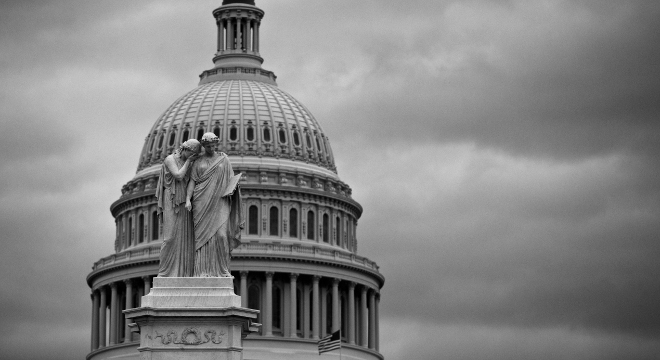If Congress fails to delay or turn off the sequester, the government and economy will be on highly uncertain terrain on March 1 — when nearly all government agencies will begin restructuring and curtailing their operations in ways that cut $85 billion from federal spending between then and the end of September.
At a White House briefing Friday afternoon, Danny Werfel, the federal controller of the Office of Management and Budget, and Jason Furman, the principal deputy director of the National Economic Council, provided reporters with the administration’s most detailed description yet of a sequestered government.
“If we go past this date, there’s no way to implement the sequester without significant furloughs of hundreds of thousands of federal employees,” said Werfel. That’s in large part because there’s no ways for departments and agencies to move money around to protect top-tier services and programs.
“What happens is, OMB, we take this amount, this $85 billion that we have to cut and apply it to every account in government,” he added. “Every account has to be cut by a certain percentage. It’s not like the agencies can move money amongst accounts. But it’s even worse than that; even at the sub-account, there’s something called Program Project and Activity which exists within each account. And the way the sequester law is written is that even underneath the account — even at the Program Project and Activity — they all need to be cut at that same percentage.”
That’s a fancy way of saying there will be disruptions in some scary places.
“So for example, FAA, they have to cut resources in a way that’s going to impact the air-traffic control workforce,” Werfel added.
If the administration is forced to order the sequester, all government agencies except those explicitly exempted, will have to cut their budgets across all programs by enough to total $85 billion by the end of the fiscal year. They have some latitude to determine how and when to execute those cuts, but they must have achieved them all by the end of September to comply with the law. And the administration is cautioning agencies not to act on the assumption that Congress will nullify the sequester in short order.
“I wouldn’t advise they rely on hope [for a deal],” Werfel added. “They need to execute plans that protect their mission, but as I mentioned, the legal requirement would be that when we get to September 30 … they will have to across government have spent $85 billion less.”
Furman reiterated that the final offer President Obama made to House Speaker John Boehner (R-OH) to avoid the sequester is still a live one, adjusted for the fact that Congress already banked about $620 billion in new tax revenues — which means the current version is significantly more spending cuts than new tax revenues.
“The final offer he had on the table to Speaker Boehner was one that was 50-50 at the time, and we’ve enacted about half of the tax portion of that, and almost none of the spending portion of that, so on a going forward basis, it would have a different ratio than when he originally proposed it,” Furman said.
But Republicans are steadfastly refusing to consider any sequester replacement proposal that includes any revenues at all, arguing in effect that they’d prefer what they describe as devastating defense cuts to a plan that combines reduced tax expenditures for the wealthy with cuts to entitlement programs, including Social Security benefits.
“The notion much propounded by the spin doctors on the Republicans side that the sequester is somehow something that the White House and the president alone wanted or desired is a fanciful confection,” said White House Press Secretary Jay Carney.
However, Carney did not explicitly say the president would veto a short-term sequester replacement plan composed entirely of spending cuts.
“Balance is essential because it’s the right way to go economically, it’s the right way to go for the middle class, and it’s the way the president insists we move forward,” he said.
Correction: This post initially identified the OMB’s federal controller by both his correct name, Danny Werfel, and the mistyped name Danny Werfer. It has been corrected.










